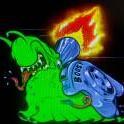You can get away with a lot of stuff on fir, and by learning on fir, if you use humbolts. A dutchman behaves differently on a humbolt cut in that if it causes the hinge to break, the tree will still rotate about on the hard dutchman as it breaks the hinge, and change direction. On a traditional face cut, you risk a barber chair, and the tree doesn't want to rotate. If a humbolt hinge breaks a bit too soon, all the tree does is fall down since it can't possibly move back towards you. It also tends to fall away from the stump and yourself, sometimes by quite a margin. If there's a chance it may become entangled, the humbolt allows the tree to rotate before hitting the ground. It also allows you to chase the cut until the hinge is nearly gone for less fibre pull, and for specialty cuts. That's my main issue with a 'tradition' face cut, and why I rarely use them unless I don't want the tree to move/rotate before it hits the ground(like near equipment or buildings etc) - I prefer the tree to fall away from me, and have no chance of coming back at me on the stump. Most mills in the US do not want the flare due to fibre direction and the fact fir is mainly used for construction. You're usually leaving the stump on the side of a mountain well away from equipment, and it is much easier on your back and far faster to cut above it. It's all about production in the US. So humbolts do not present an issue.
I put this swanson cut on an oak on our estate because it had a heavy lean over a berm. I didn't want the oak to hit the berm and then slide back towards me. This way, it fell forwards, hit the berm, then slid and rotated sideways away from me. If you look at the tree, you can see the front of it is facing upwards as it had spun 180*.
It was for firewood, so I definitely cut that stump down and took it all to the processor







